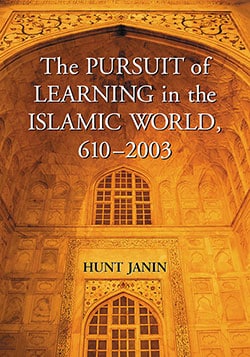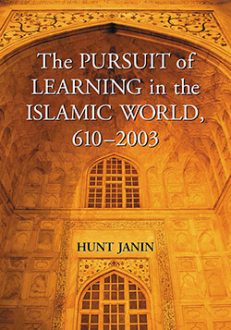The Pursuit of Learning in the Islamic World, 610–2003
$39.95
In stock
About the Book
Islam scares the West. Militant conservatism and the horrific acts of violent fundamentalists evoke outrage, but the reprehensible few reinforce a longstanding Western stereotype of all Muslims as “incorrigibly fanatical, violent and morally and culturally different.” Overlooked is the long history of Muslim intellectual and cultural achievement, and its potential to flower once again. With about 1.5 billion adherents, Islam is the world’s fastest growing religion. An understanding of its past glories, present state and future potential has never been more critical. This survey of Muslim intellectual and cultural achievements spans 1,400 years. Chapters fall into three sections: fundamentals of Islamic learning; its growth until the present; and its future direction in the face of anti-intellectual fundamentalism. Arranged chronologically within the sections, chapters begin with an historical overview of the time period they encompass, providing context for the subsequent discussion of key intellectual and cultural achievements within that period. Appendices describe decorative and other arts, the requirements for expertise in Islamic thought, Islamic ethical traditions, and list noteworthy personalities and achievements chronologically. Maps and photographs illustrate the text, which also includes a glossary, notes, a bibliography and an index.
About the Author(s)
Bibliographic Details
Hunt Janin
Format: softcover (7 x 10)
Pages: 235
Bibliographic Info: 26 photos, maps, glossary, appendices, notes, bibliography, index
Copyright Date: 2006 [2005]
pISBN: 978-0-7864-2904-2
Imprint: McFarland
Table of Contents
Preface 1
Introduction: Why This Book? 3
Part One: Fundamentals of Islamic Learning
I. The World of Islam: Doctrines and Structure 11
II. The Prophet Muhammad and His Times (c. 500–632) 25
III. The Quran 31
Part Two: The Growth of Islamic Learning
IV. Islam Becomes the Dominant Faith of an Empire (632–873) 39
V. The Flowering of Islam (873–1041) 61
VI. Population Movements and Islamic Cities (1041–1453) 77
VII. The Age of Great Empires (1453–1699) 111
VIII. The Impact of the West (1699–2003) 128
Part Three: Islamic Fundamentalism and the Future
IX The Challenge of Fundamentalism 157
X Conclusions: Future Prospects for Islamic Learning 176
Appendix 1 : The Decorative and Other Arts of Islam 181
Appendix 2 : Expertise in Islamic Thought 193
Appendix 3 : Ethical Traditions in Islam 195
Appendix 4 : Noteworthy Islamic Personalities and Cultural Achievements 199
Glossary of Selected Islamic Terms 201
Notes 205
Selected Bibliography 219
Index 227
Book Reviews & Awards
- “useful”—C&RL News.






